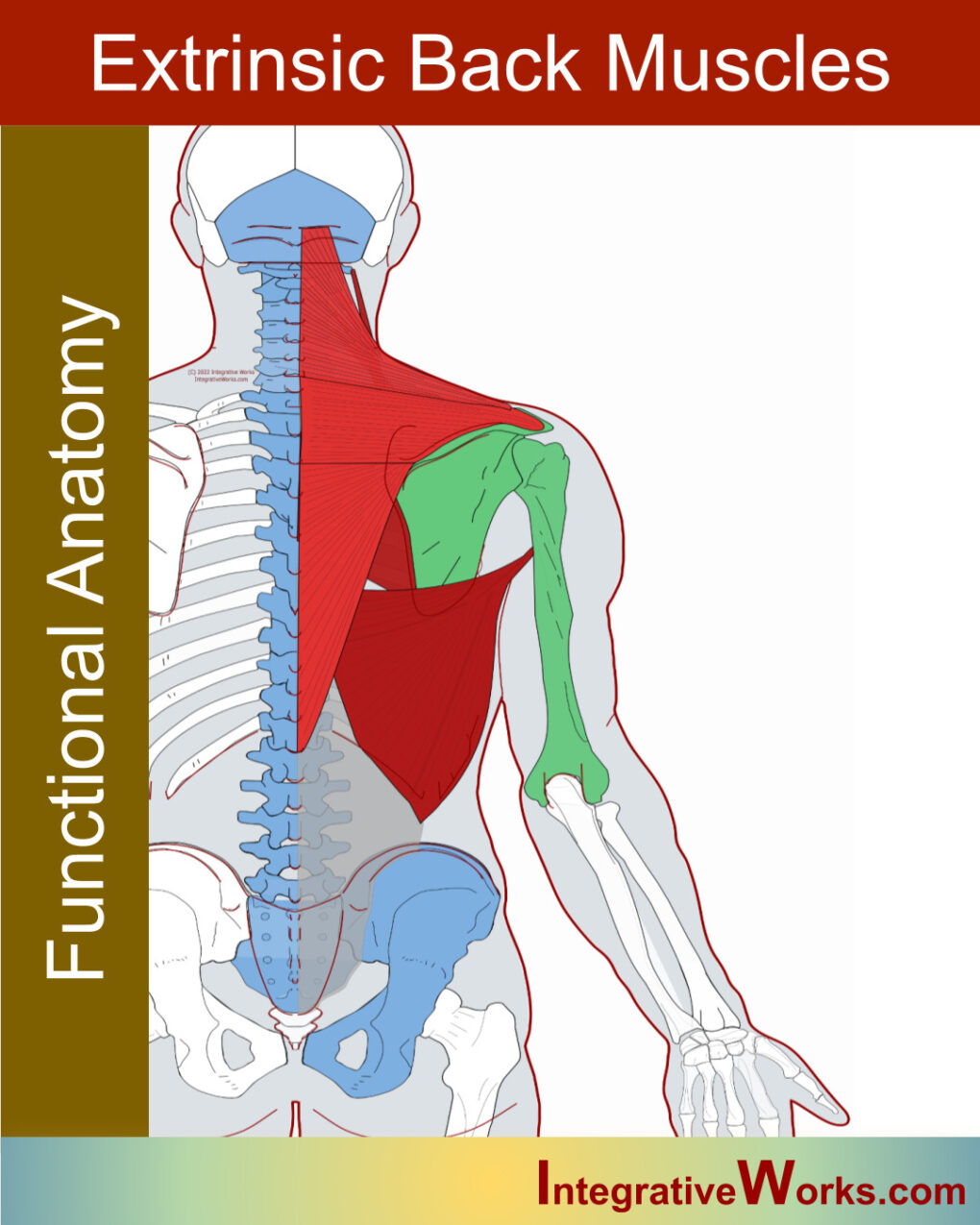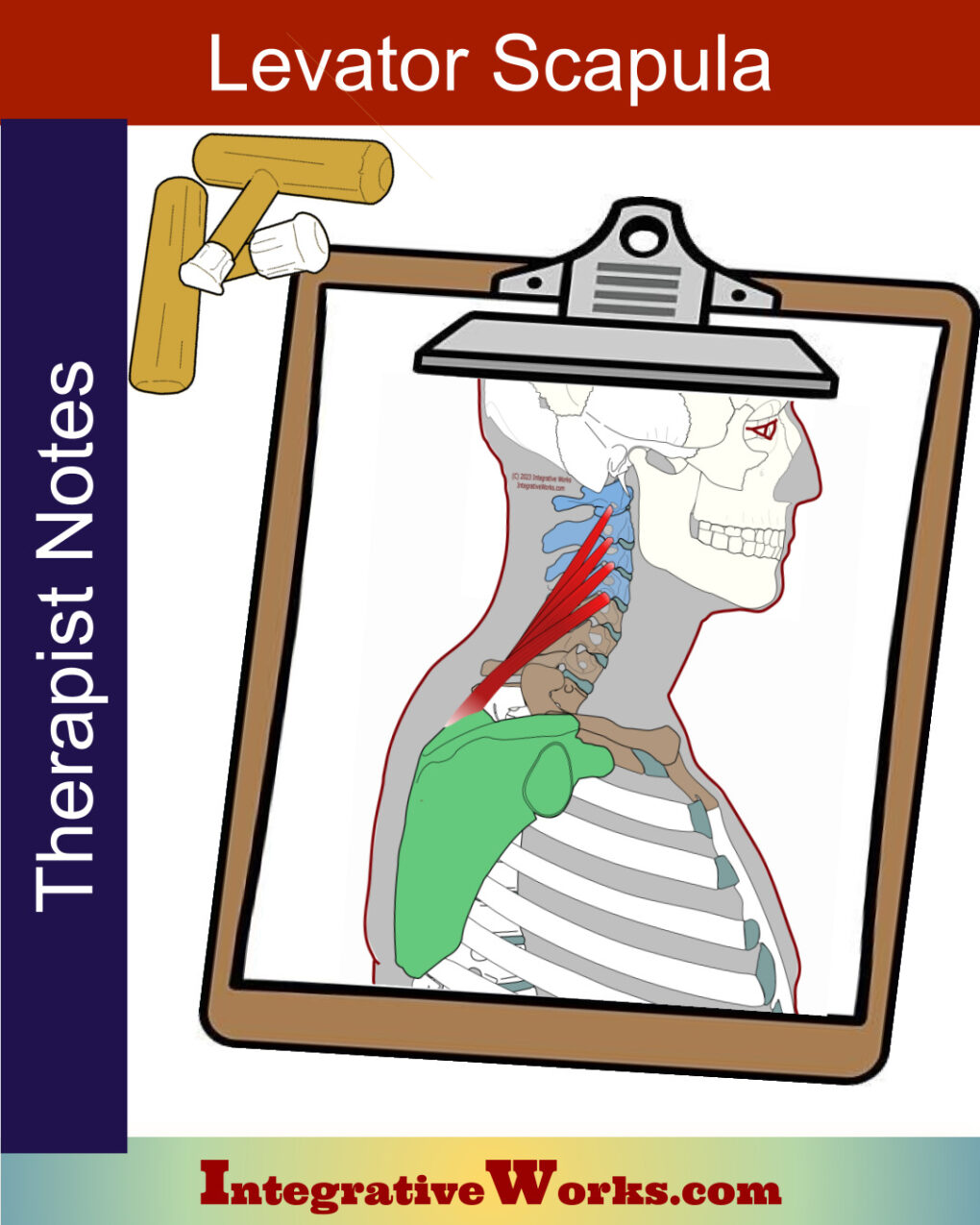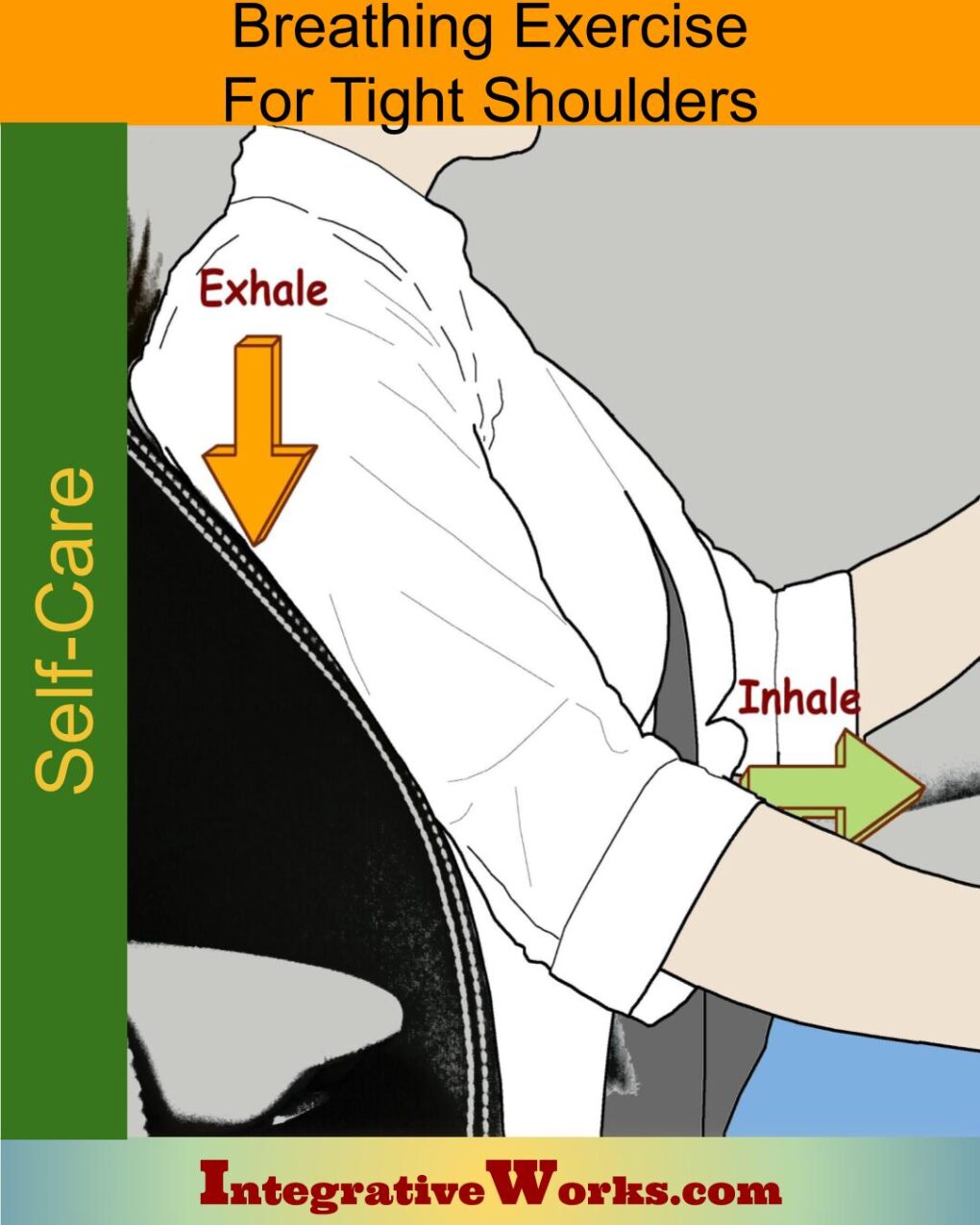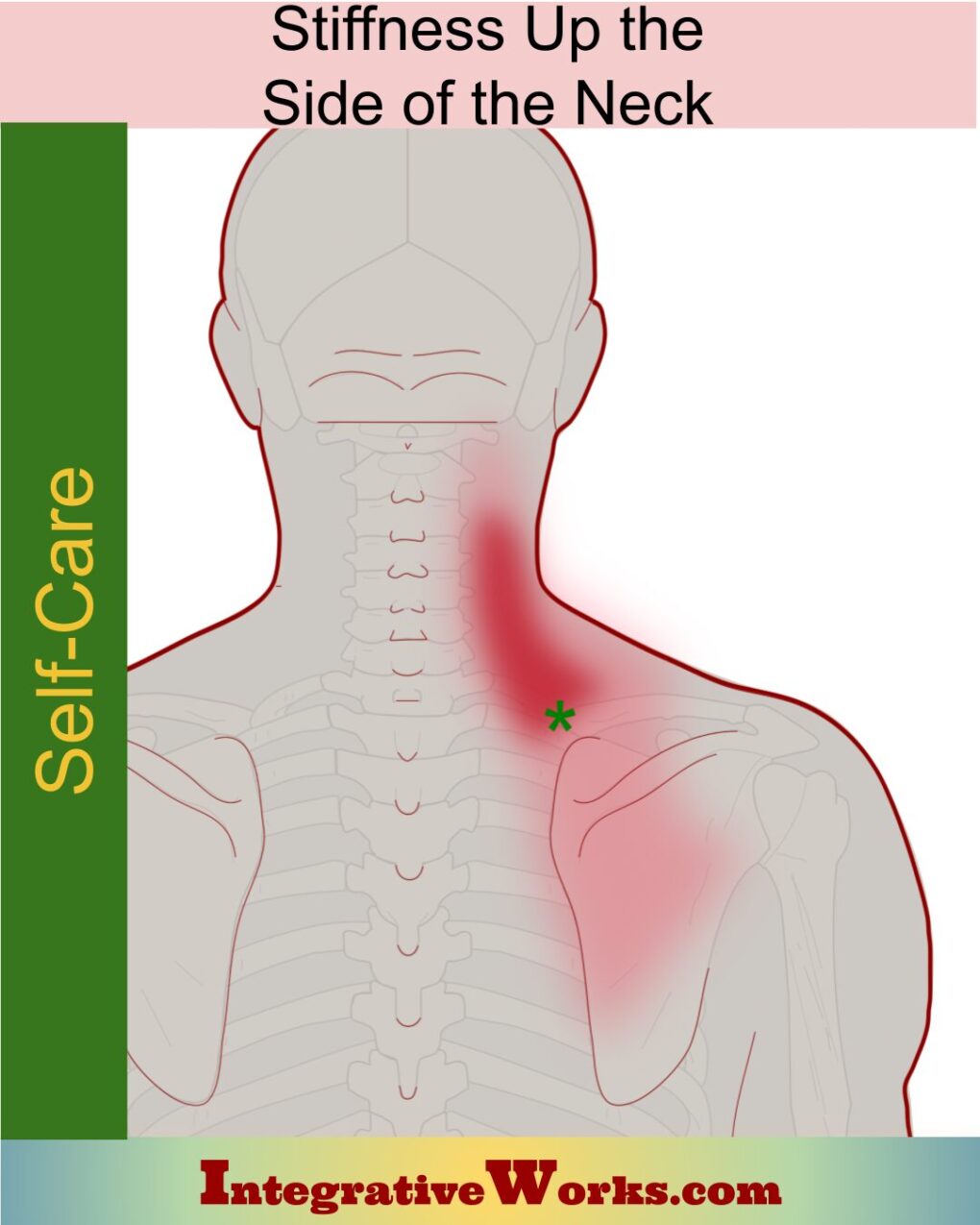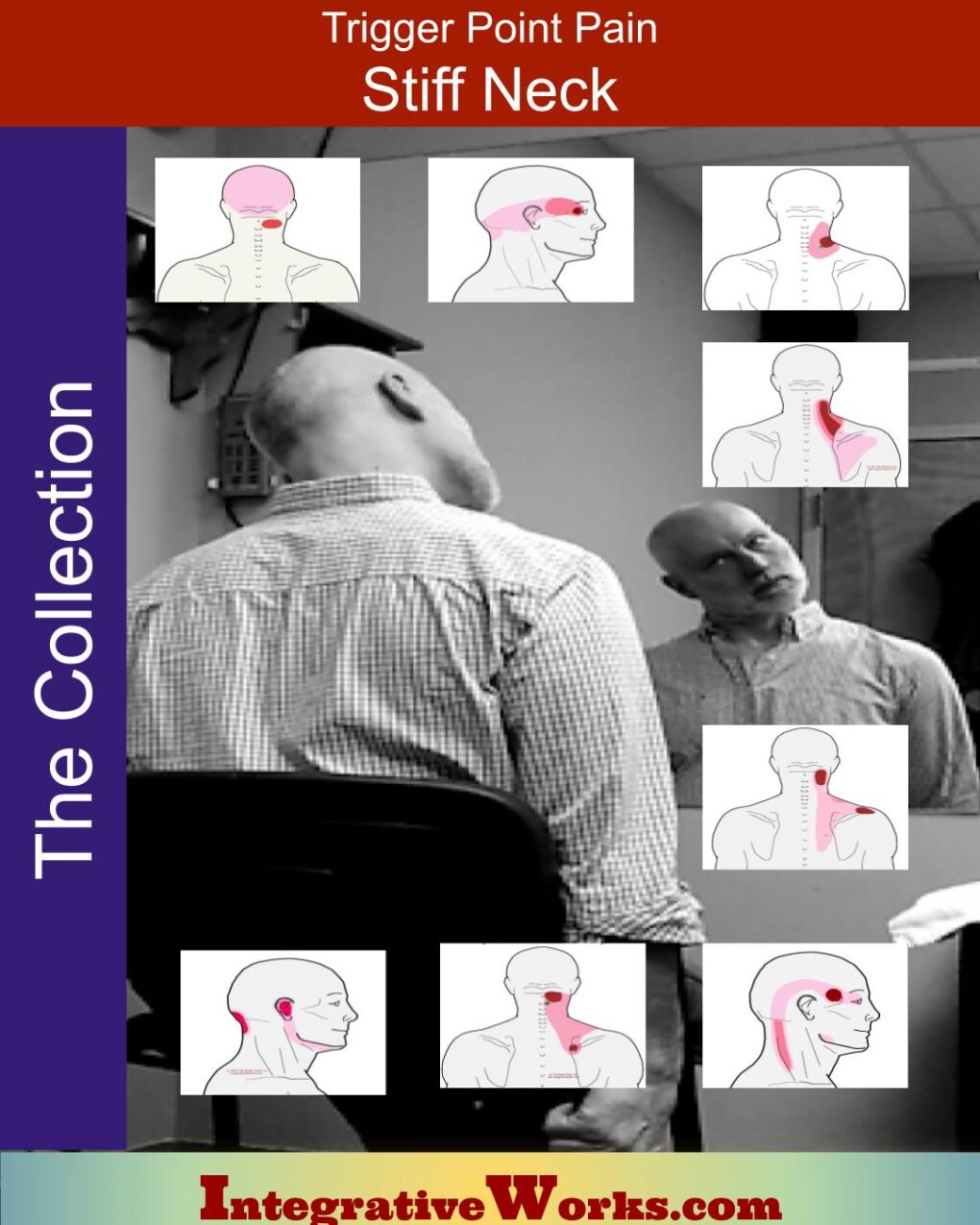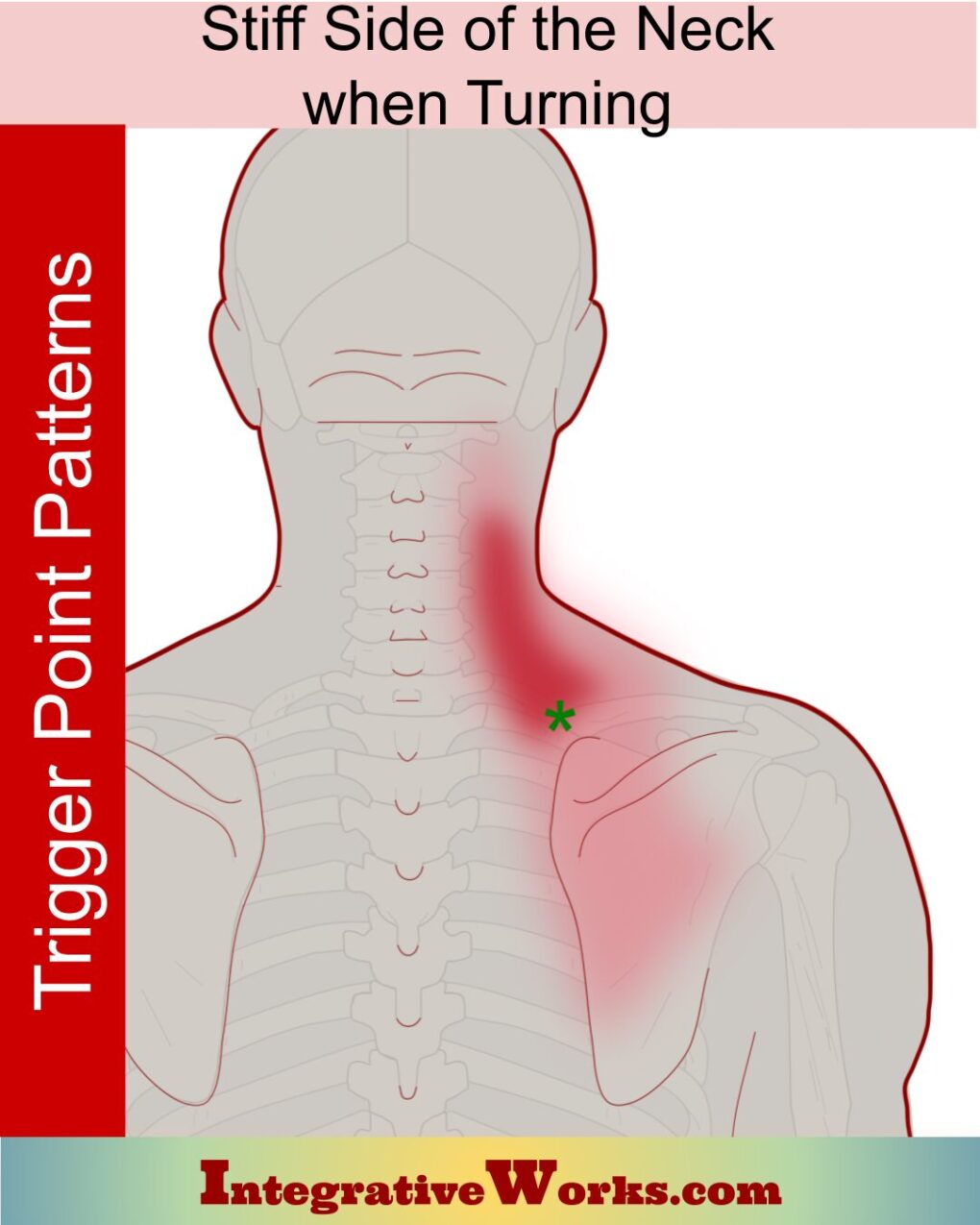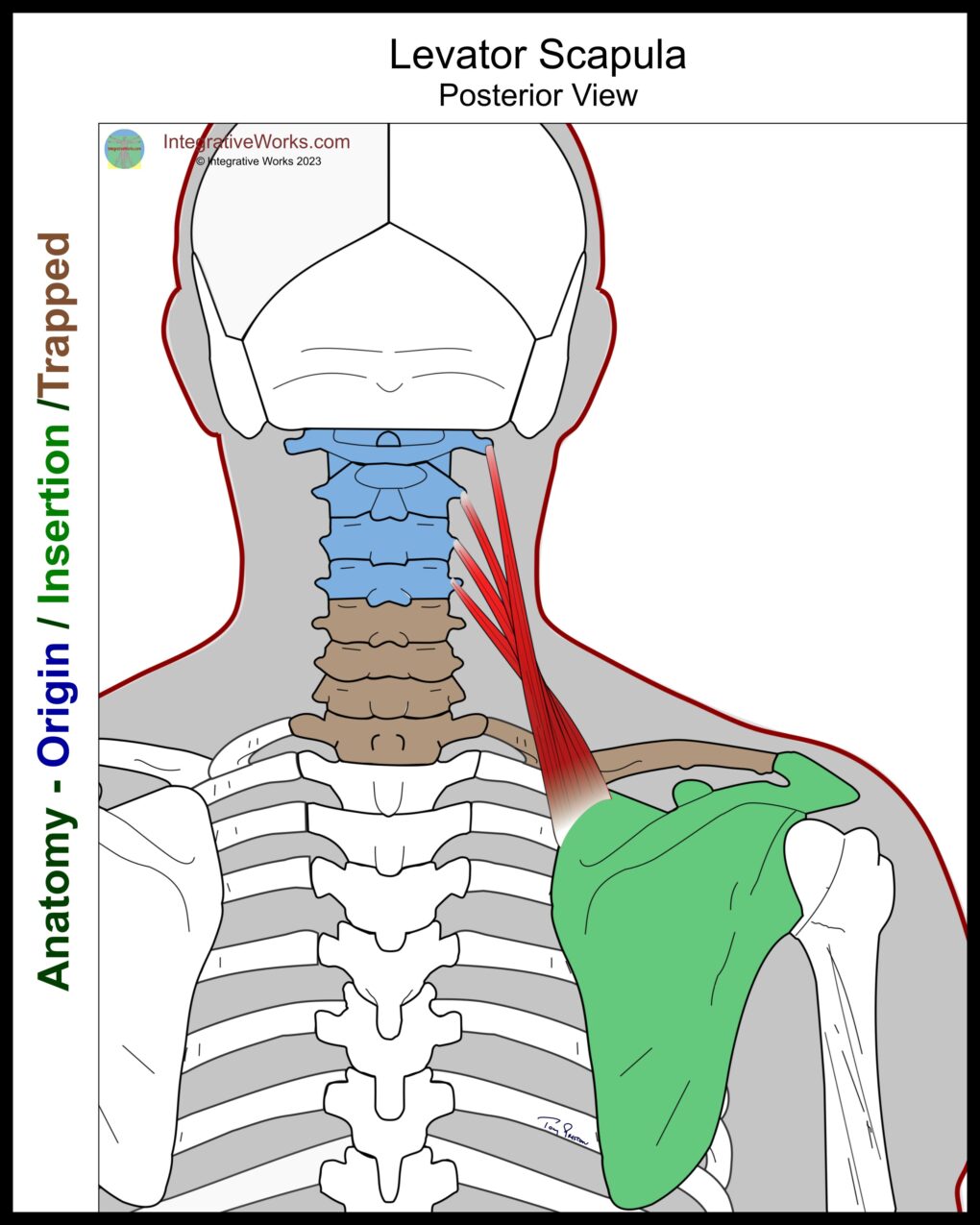
Downloadable on Etsy
Overview
The Levator scapula is a ropy extrinsic back muscle that connects the scapula to the upper cervical vertebrae. Its function and variations are more involved than most muscles.
Origin
- Transverse processes of C1-C4
Insertion
- medial border of the scapula
Function
- elevation of the scapula
- assists in the retraction of the scapula
- assists in the downward rotation of the scapula
Nerve
- dorsal scapular nerve, C4-C5
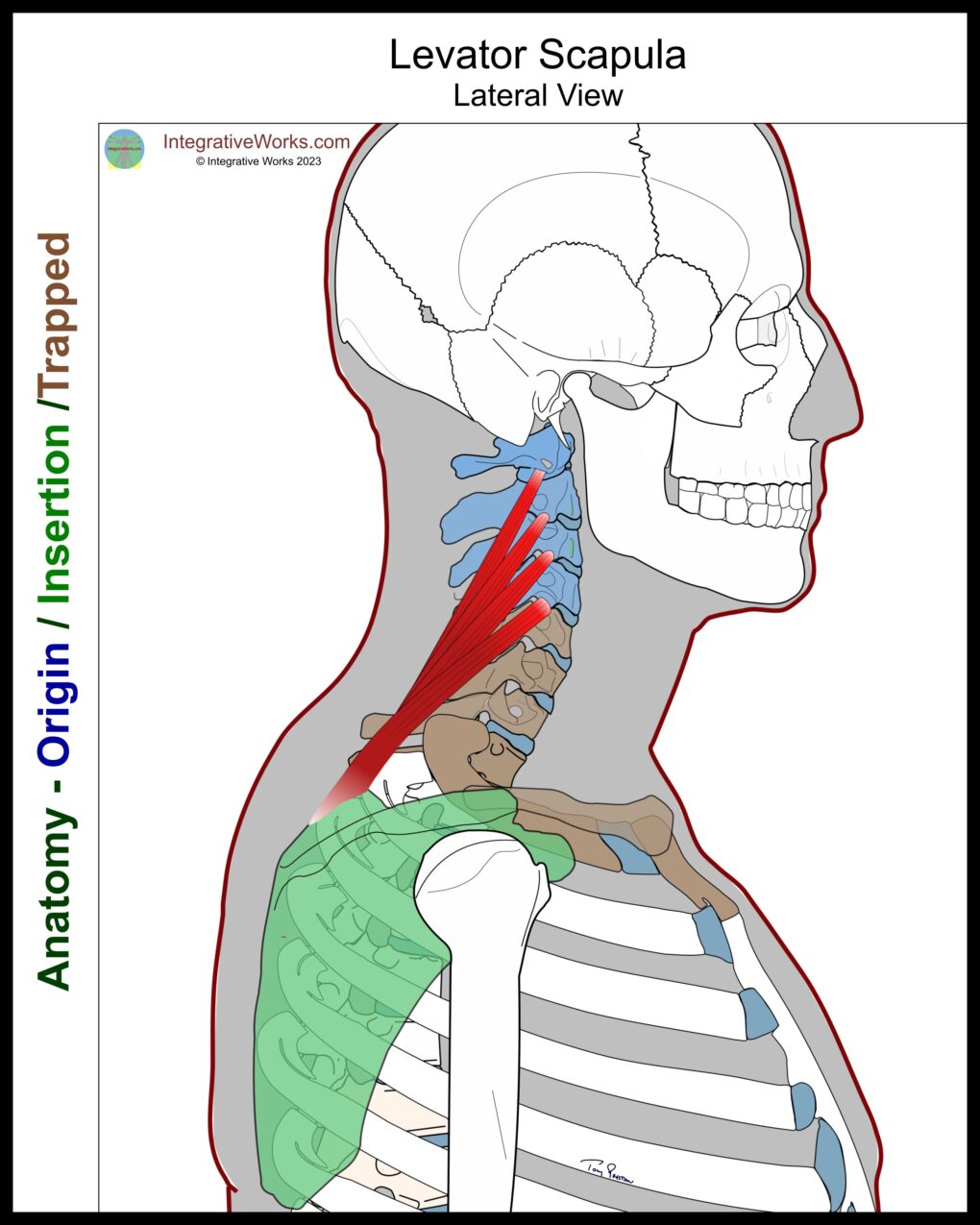
Downloadable on Etsy
Functional Considerations
As the name implies, it elevates the scapula. This action assists in the downward rotation of the scapula. Anchoring the upper extremity permits the upper sections to help rotate the upper cervicals and extend the neck. At the same time, it helps to rotate the scapula downwardly when the neck is stable.
The Twist
The bellies attached to the upper vertebrae attach to a lower and more medial spot on the scapula. Conversely, the bellies attach to the lower vertebrae attach more superiorly and laterally. This creates a twist in the muscle. Consequently, the upper bellies are positioned to be more effective in elevating the scapula. Meanwhile, the lower bellies are better at retracting the scapula.
The levator scapula is stretched by Forward-Head Posture, elevating and protracting the scapula.
As noted below, there are a significant number of anomalies in the lower attachment. Obviously, when this muscle attaches to the ribs or serratus posterior superior, elevation of the scapula is impaired.
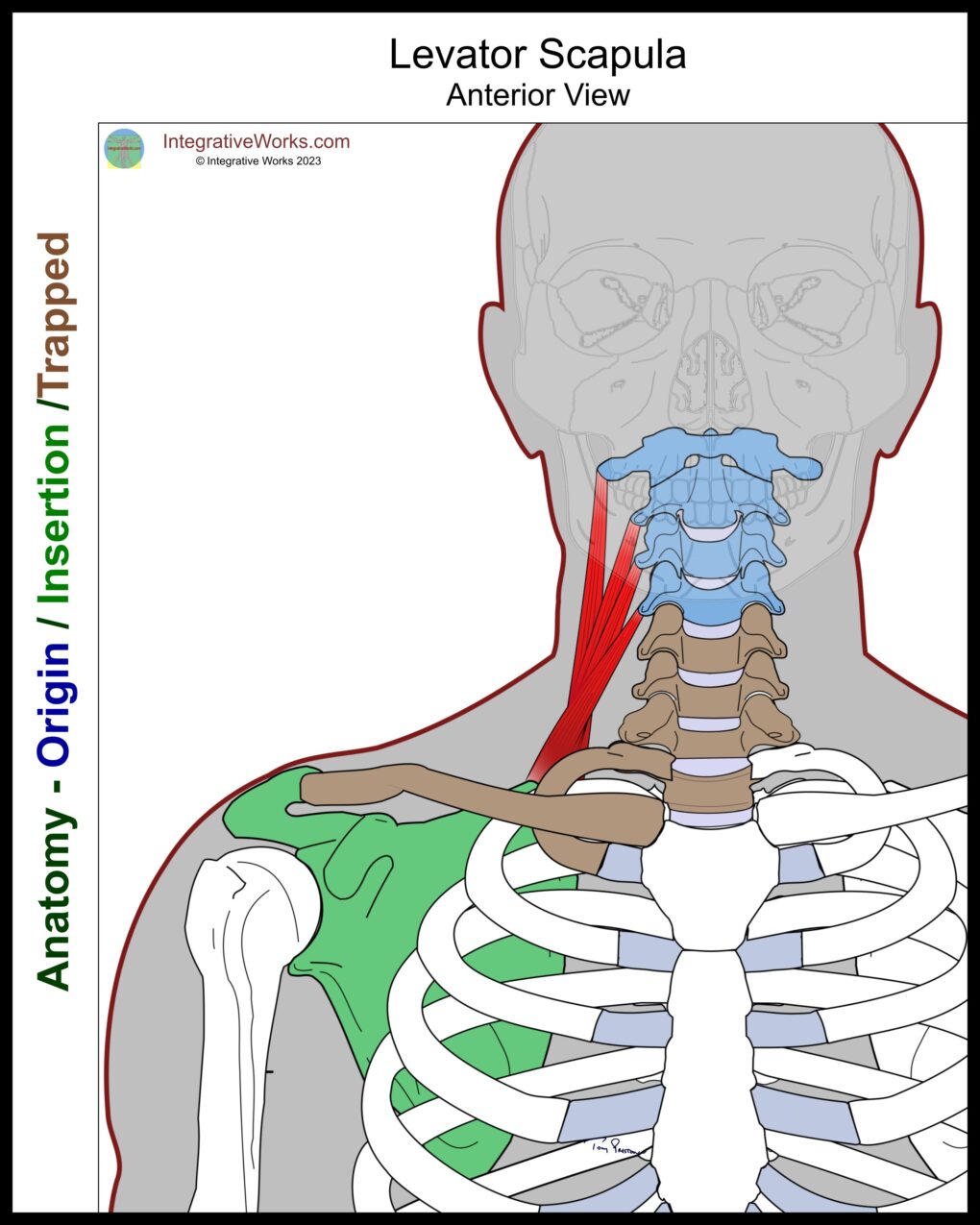
Downloadable on Etsy
Anomalies, Etc.
Studies show that there are statistically significant variations in the structural anatomy of the levator scapula. The upper portion may attach to a varying number of vertebrae as well as the occiput.
This study revealed anomalies in the distal attachment in almost half of the cadavers studied. The distal end may blend with the serratus anterior, serratus posterior superior, or connect to the top two ribs.
Additionally, there are numerous studies on the innervation of the levator scapula. Again, the anatomy is highly variable. This study has an overview of a study of 30 cadavers showing a variance in 30-52% of cadavers.
Related Posts
Cervical Lamina Supine – Neuromuscular Massage Protocol
Extrinsic Back Muscles – Functional Anatomy
Levator Scapula – Massage Therapy Notes
Levator Scapula – Neuromuscular Massage Protocol
Musculoskeletal Illustrations
Self Care – Breathing Exercises to Reduce Shoulder Tension
Self Care – Stiffness up the side of the neck
Stiff Neck: Pain Patterns and Self-Care
Stiff Side of Neck When Turning
Wikipedia entry for Levator Scapula
Support Integrative Works to
stay independent
and produce great content.
You can subscribe to our community on Patreon. You will get links to free content and access to exclusive content not seen on this site. In addition, we will be posting anatomy illustrations, treatment notes, and sections from our manuals not found on this site. Thank you so much for being so supportive.
Cranio Cradle Cup
This mug has classic, colorful illustrations of the craniosacral system and vault hold #3. It makes a great gift and conversation piece.
Tony Preston has a practice in Atlanta, Georgia, where he sees clients. He has written materials and instructed classes since the mid-90s. This includes anatomy, trigger points, cranial, and neuromuscular.
Question? Comment? Typo?
integrativeworks@gmail.com
Interested in a session with Tony?
Call 404-226-1363
Follow us on Instagram

*This site is undergoing significant changes. We are reformatting and expanding the posts to make them easier to read. The result will also be more accessible and include more patterns with better self-care. Meanwhile, there may be formatting, content presentation, and readability inconsistencies. Until we get older posts updated, please excuse our mess.


